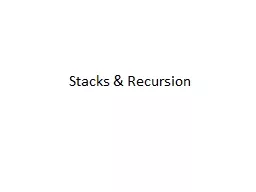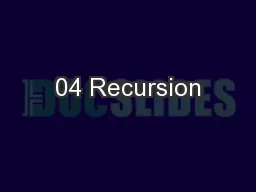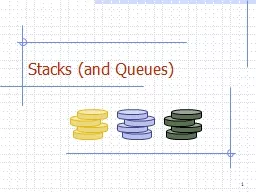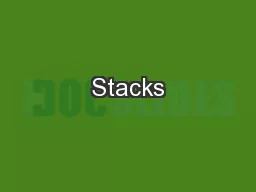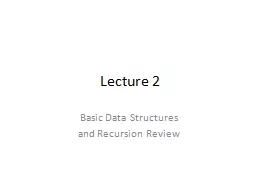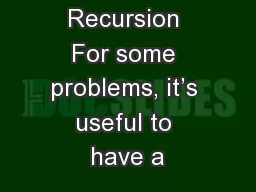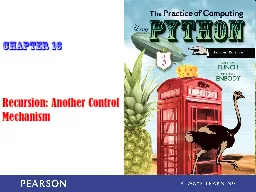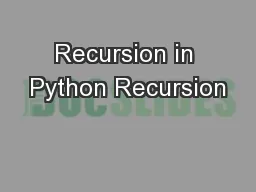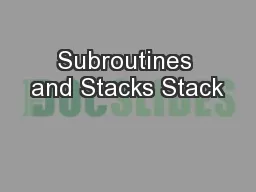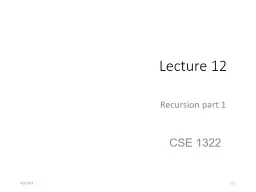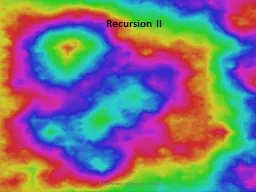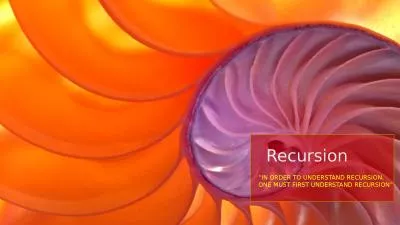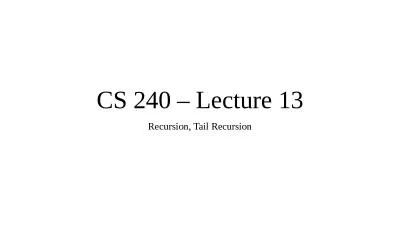PPT-Stacks & Recursion Stack
Author : karlyn-bohler | Published Date : 2019-06-29
push pop LIFO list only top element is visible t op Defining the ADT Stack Data a linear collection of data items in which all operations occur at one end called
Presentation Embed Code
Download Presentation
Download Presentation The PPT/PDF document "Stacks & Recursion Stack" is the property of its rightful owner. Permission is granted to download and print the materials on this website for personal, non-commercial use only, and to display it on your personal computer provided you do not modify the materials and that you retain all copyright notices contained in the materials. By downloading content from our website, you accept the terms of this agreement.
Stacks & Recursion Stack: Transcript
Download Rules Of Document
"Stacks & Recursion Stack"The content belongs to its owner. You may download and print it for personal use, without modification, and keep all copyright notices. By downloading, you agree to these terms.
Related Documents

